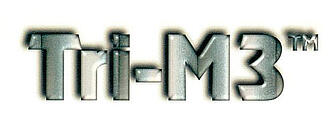While single-metal plating has been used for many years for a variety of industries, “White Bronze” or tri-metal (Tri-M3) plating is quickly becoming a suitable alternative. White Bronze plating offers superior corrosion resistance, low electrical resistance, non-magnetic properties, and extremely high hardness characteristics. It’s a less expensive approach to using silver and offers definitive health safety advantages compared to nickel. Due to its cost effectiveness and performance White Bronze is rapidly becoming the preferred plating for RF Connectors.

White Bronze centers around an alloy ratio of 55% copper, 30% tin, and 15% zinc. It offers the same bright white finish as plated alloys that contain nickel, silver, or rhodium. It produces smooth, low friction surfaces with non-porous characteristics and is also non-magnetic. White Bronze is ideal for soldering applications as it is lead-free, can be soldered with or without flux, and offers excellent leveling characteristics. The most important factor for tri-metal alloys in electroplating is the ability to control the % alloy mixture to achieve specific performance characteristics and properties. This has resulted in an increase use of White Bronze for the electronics and telecommunications industries and is a significant replacement to traditional tin and copper-tin alloy plating via silver or nickel.
Tri-metal plating yields tremendous cost savings and performance improvements for the telecommunications industry – in particular plated RF connectors. White Bronze helps plated components exceed the varying torque and dynamic stresses due to its improved mechanical characteristics such as hardness and ductility when compared to plated silver or nickel. These enhancements ultimately reduce the number of equipment failures, increase component lifecycle, and provide significant maintenance savings for telecommunications companies.
Increasing frequency demands and transmitter power levels on highly sensitive receivers will also benefit from these significant advantages. Traditional RF connectors, filters, and miscellaneous components plated with silver or nickel and subjected to corrosive environments will eventually experience oxidation. This leads to tarnishing and potential breakdown. Tri-Metals are non-magnetic, resistant to tarnishing and corrosion, it is less porous, and offers low electrical resistance – making it the perfect choice for protection against passive intermodulation distortion (PIM) in high frequency applications. Unwanted signals generated by the non-linear mixing of frequencies generate a higher order of harmonic frequency. If the frequency interferes with the receiving band, the channel could be blocked. This is especially true for growing use of GSM, DCS, PCS, and other wireless communication services. White Bronze reduces frequency distortion for high performance microwave components, antennas, base stations, and wireless satellite communications; removing undesirable signals.
PIM is a major problem in passive devices – especially with the growing demand for ultra-sensitive high frequency applications. Oxidation or degradation to contact junctions, dynamic flexing, or vibration can be a primary cause. Hysteresis occurs in ferromagnetic materials and may result in unwanted rapid switching or lagging of frequencies. Finally, nickel or silver plated RF connectors subjected to extreme environments can result in contamination or surface oxidation, leading to passive intermodulation distortion. Due to the intrinsic non-magnetic, hardness, and corrosion resistant properties of white bronze, the telecommunications industry is poised to meet the growing demand in high frequency applications.
When designing RF connectors for telecommunication applications, copper-tin-zinc alloys easily avoid interference with RF signals when compared to nickel or stainless steel components. Recent studies show these materials increasing distortion by 50 dBs or more. This magnitude of distortion is more than ample to overlap with nearby receiving bandwidths or block carrier positions. Additionally, the improved mechanical properties of white bronze allow for higher compression crimping. This results in superior performance and component reliability.
Tri-Metals (White Bronze) allow telecommunication designers and engineers to customize the % alloy content for plating in order to specifically tailor RF Connectors to the design and performance requirements necessary; with significant cost savings in mind.




